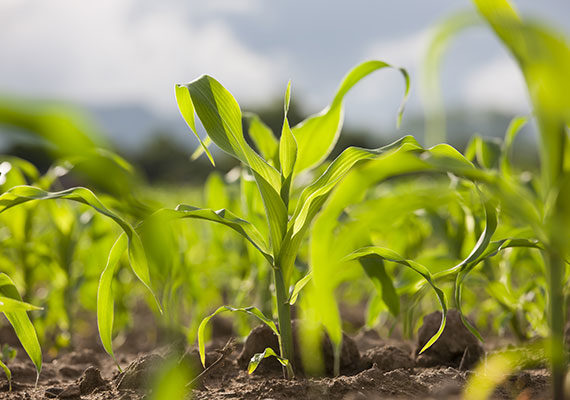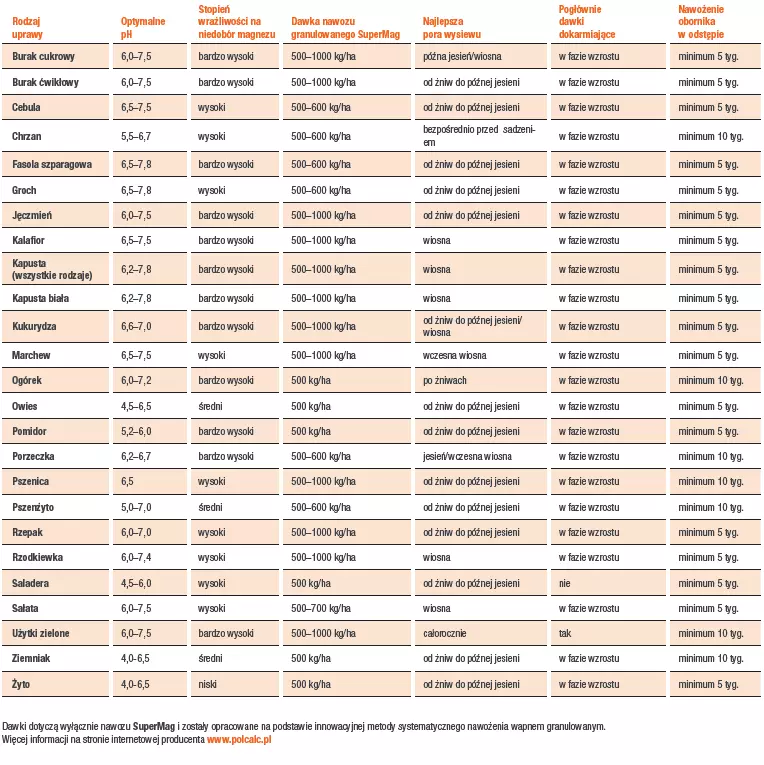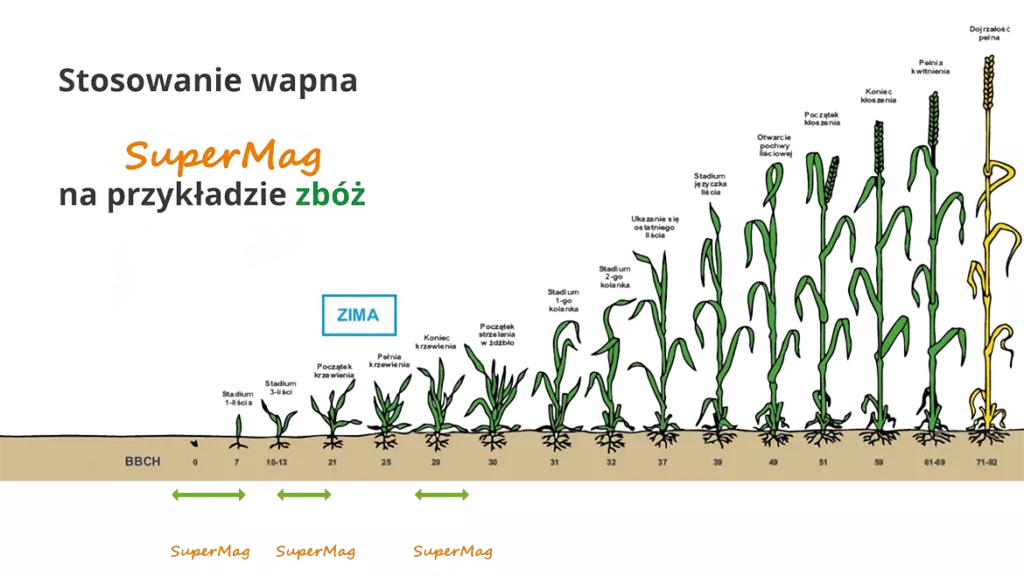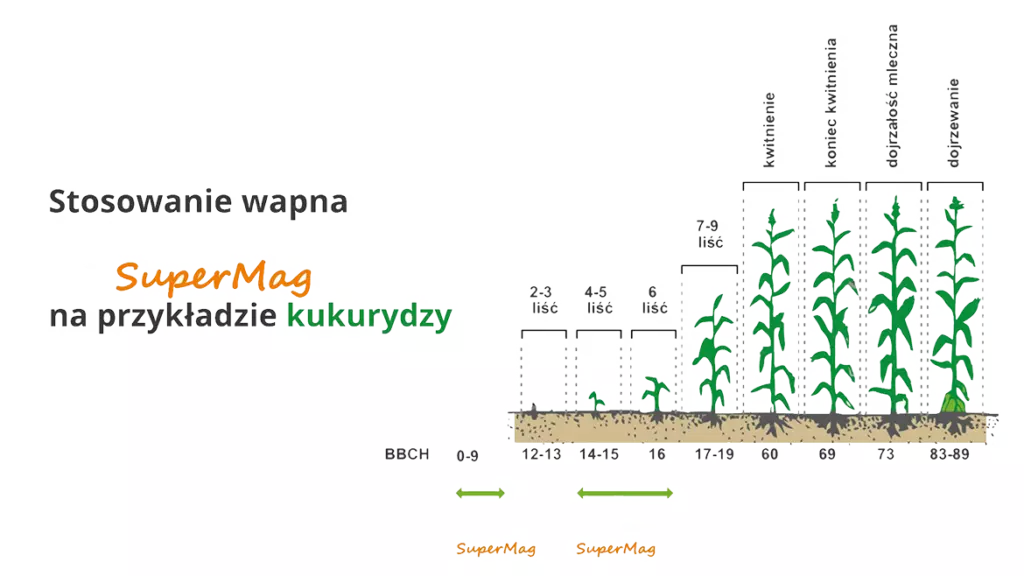
WHY DOES MAGNESIUM DEFICIENCY IN SOIL LEAD TO POOR YIELDS?
Soil is an essential element of the biosphere. Its richness in absorbable forms of necessary macronutrients and micronutrients significantly influences the yield of cultivated plants. It has been shown that over 90% of Poland's area consists of soils formed from sedimentary rocks, with over 70% originating from Pleistocene clays and glacial sands, strongly eroded and sorted by glacial waters. Initially, due to hydrolysis of the parent material, calcium, magnesium, and other alkaline cations were released and then washed out, resulting in about 80% of Poland's agricultural land being naturally acidified to varying degrees (Witek 1979; Filipek 1997; Mocek and Owczarzak 2010; Krasowicz et al. 2011; Filipek and Skowrońska 2013).
In the case of acidic soils with a pH of 5.0 and lower, there is a drastic increase in magnesium losses due to leaching, and increased aluminum ion availability worsens its uptake. Therefore, intensive magnesium fertilization of these soils without changing their pH is not fully effective. When using typical calcium-magnesium fertilizers, it should be noted that magnesium release from them occurs over two or even three years. It is recommended to carry out this procedure at least a year before sowing plants requiring soil pH (optimal pH 6.5-7.5) and magnesium content such as sugar beets, for which the critical magnesium content ranges from 6 mg MgO·100g-1 soil (light soils) to 12 mg MgO·100 g-1 soil for heavy soil (Szczepaniak and Musolf 2006; Gołębiewski 2015).
The classification of soil magnesium content is fivefold. For plant development, the optimal level is not the highest but rather the average. Why is it worth controlling the level of this element in the soil? Magnesium is essential for the proper functioning of plant life processes. Without it, photosynthesis and the uptake of mineral nutrients from the soil cannot occur efficiently. Magnesium, as a component of chlorophyll, influences the proper development of the plant. It is responsible for the transport of assimilates and the synthesis of proteins, fats, and carbohydrates.
Magnesium deficiency in the soil leads to improper development of the root system, through which plants absorb essential mineral nutrients for growth. Shallow root systems indicate inhibited plant development. On the other hand, its optimal level will positively affect nitrogen, phosphorus, and potassium metabolism. Importantly, magnesium reduces the level of nitrates in yields and ensures proper phosphorus storage in plant seeds. If magnesium deficiency in the soil is replenished, plant development will proceed correctly. Yields will be more resistant to the effects of harmful external factors.
MAGNESIUM DEFICIENCY IN SOIL - SYMPTOMS
If the soil is deficient in this element or even lacks magnesium, we may observe weaker plant development. Characteristic features include interveinal chlorosis on older leaves. If at this point we decide to replenish the magnesium level, we will observe necrosis, i.e., death between the leaf veins, in the same areas. This manifests as the formation of dry, brown spots on the leaves.
Testing the soil is a better solution - a sample can be taken and checked before sowing. Severe magnesium deficiency in the soil is observed during drought periods. Hot summers and lack of rainfall undoubtedly contribute to the transformation of this element into a less absorbable form for plants. During such periods, proper fertilization should be ensured. Otherwise, yields will be poor - decreased plant resistance and deterioration in the biological value of the yields will translate into profits in cultivation.
Drought causes magnesium deficiency in the soil. In regions with light or very light soils, long and intense atmospheric precipitation will also affect the magnesium level, leading to the leaching of magnesium on such a scale that it can result in up to 40 kg loss per hectare.
In the case of heavy soils, insufficient water supply to the roots is observed, which can also result in a low level of magnesium delivered to the plant cells. The solution is subsoil fertilization using products such as SuperMag.
Farmers cultivating plants sensitive to magnesium deficiency, such as sugar and fodder beets, potatoes, rapeseed, cereals, maize, root vegetables, tomatoes, peppers, cucumbers, pumpkins, and lettuce, should pay particular attention to the magnesium level in the soil. These are plants that require maintaining a certain level of magnesium in the soil. The use of magnesium fertilizers translates into increased crop production.
SUPERMAG - MODERN SOLUTION FOR MAGNESIUM DEFICIENCY IN SOIL
An effective and fast-acting "remedy" for growing magnesium-deficient plants is SuperMag, produced by Polcalc Nawozy Wapniowe Sp. z o.o. since 2019. SuperMag is a carbonate, granulated calcium-magnesium fertilizer produced from the highest quality calcium-magnesium meal, containing from 53% to 57% CaCO3 and 42-46% MgCO3, as well as small amounts of such elements as SiO22 (1%), Al2O3 (0.5%), and Fe2O3 (0,4%).
The calcium-magnesium meal is extremely pulverized in the fertilizer production process so that the sizes of individual grains range from 0.001 to 0.1 mm, with 50% of these particles being 0.02 mm in size. Thanks to such significant pulverization of the meal, the fertilizer granules SuperMag, which are formed from it - without binders and on an innovative technological line - quickly supply plants with absorbable magnesium necessary for their proper growth and development and in a short time cause a favorable change (increase) in soil pH.
To maintain the proper state of the granular structure of the soil , liming should also be applied. In this case, a good solution will be a multi-component granular fertilizer. SuperMag granular fertilizer, thanks to its innovativeness, can be used both pre-sowing and top-dressing, which contributes to a significant reduction in the number of agronomic treatments performed (Fig. 1). When using SuperMag, remember to observe a 3-week break between our fertilizer and other fertilizers containing phosphorus and nitrogen in the ammonium form, as the high reactivity of SuperMag can reduce the absorption of these macronutrients by plants.
The innovative technology of SuperMag fertilizer production significantly increases its reactivity and solubility in the soil solution, which allows for a reduction in the effective fertilizer dose to 500-1000 kg∙ha-1 (Table 1).

Table 1. Doses of granulated magnesium lime SuperMag for selected plant species



Fig. 1. Application dates of granulated calcium-magnesium fertilizer SuperMag using selected crop species as an example






